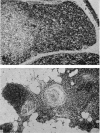Abstract
The wet, lipid and lean dry weights of 574 thymus glands from Coroner's necropsies were examined for age-related changes. Despite enormous variation in wet and lipid weights at all ages there was a gradual decrease in wet weight with age and a significant increase in lipid weight until 40--50 years of age, with little change thereafter. There was a small decrease in lean dry weight with age, but it is not known if this reflects a change in cellularity. Multiple regression analysis showed that lower wet and lipid thymic weights were associated with long-term stressful conditions, and higher weights with deaths from asphyxia (largely in younger persons) and five groups of cardiovascular conditions. The percentage of lipid in these groups was not increased.
Full text
PDF
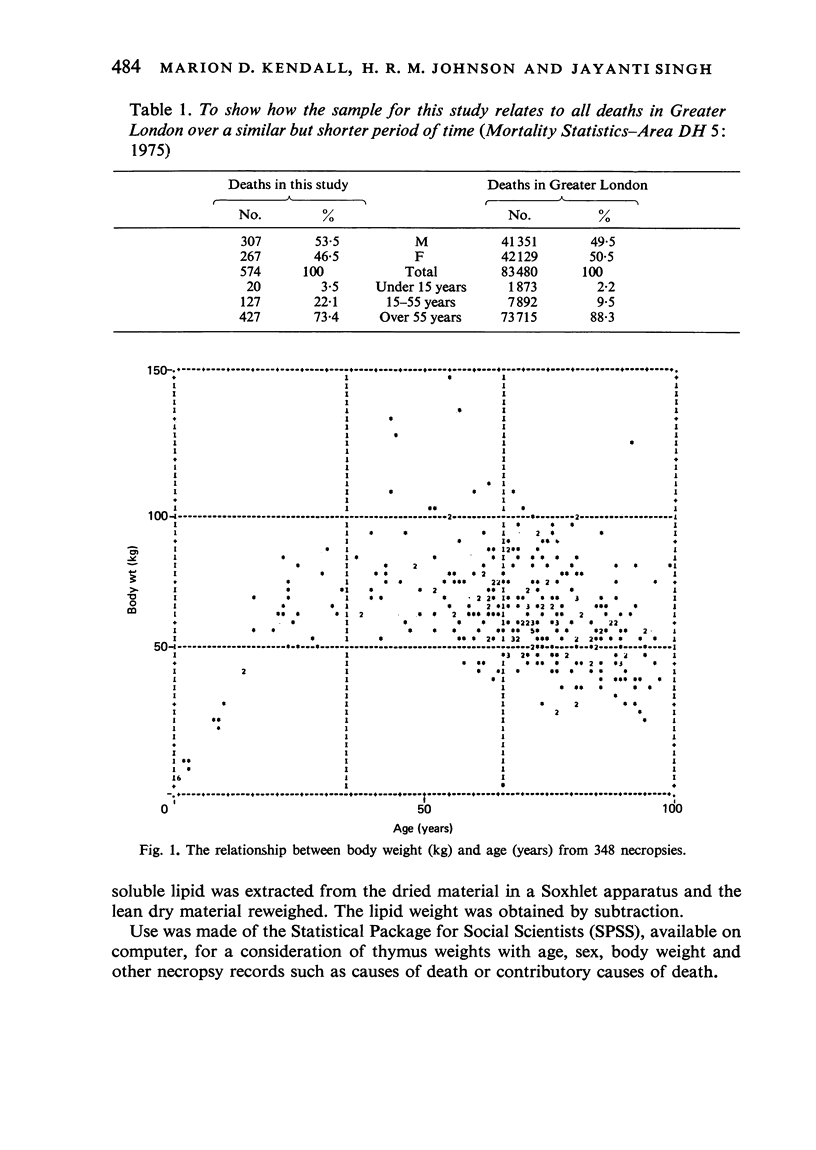
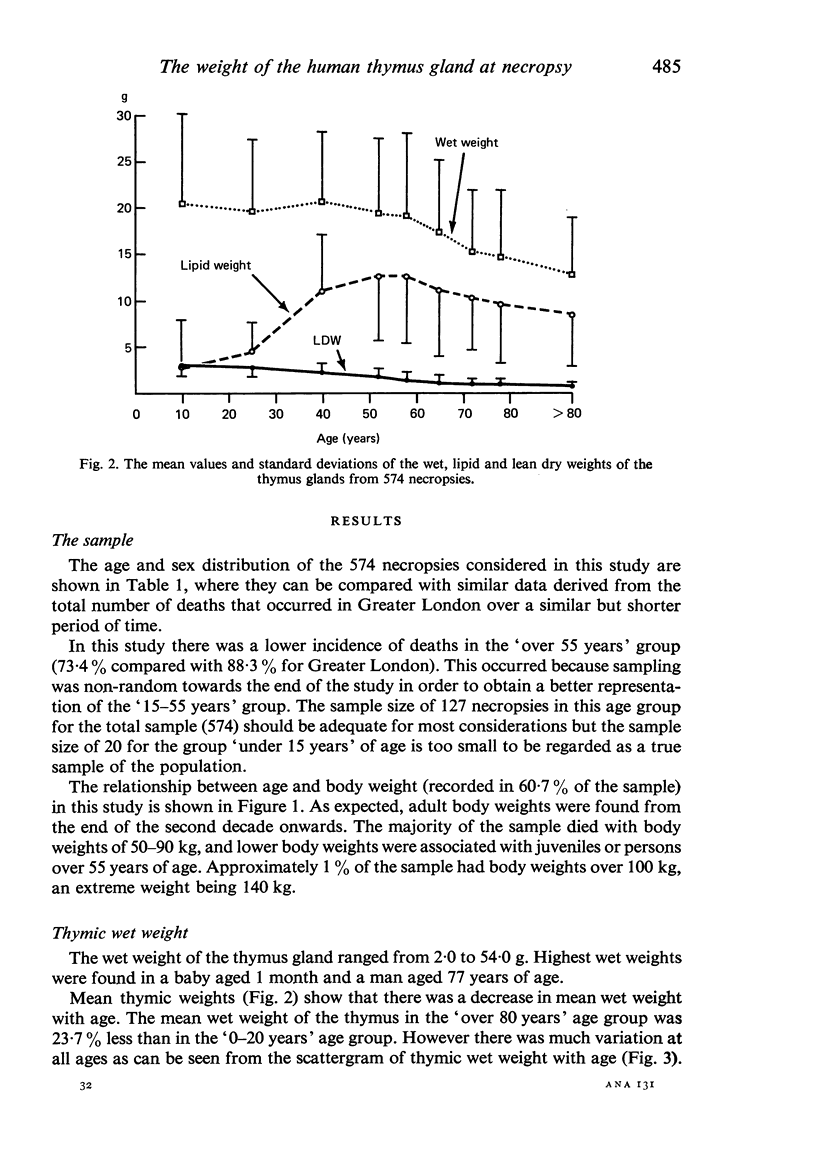
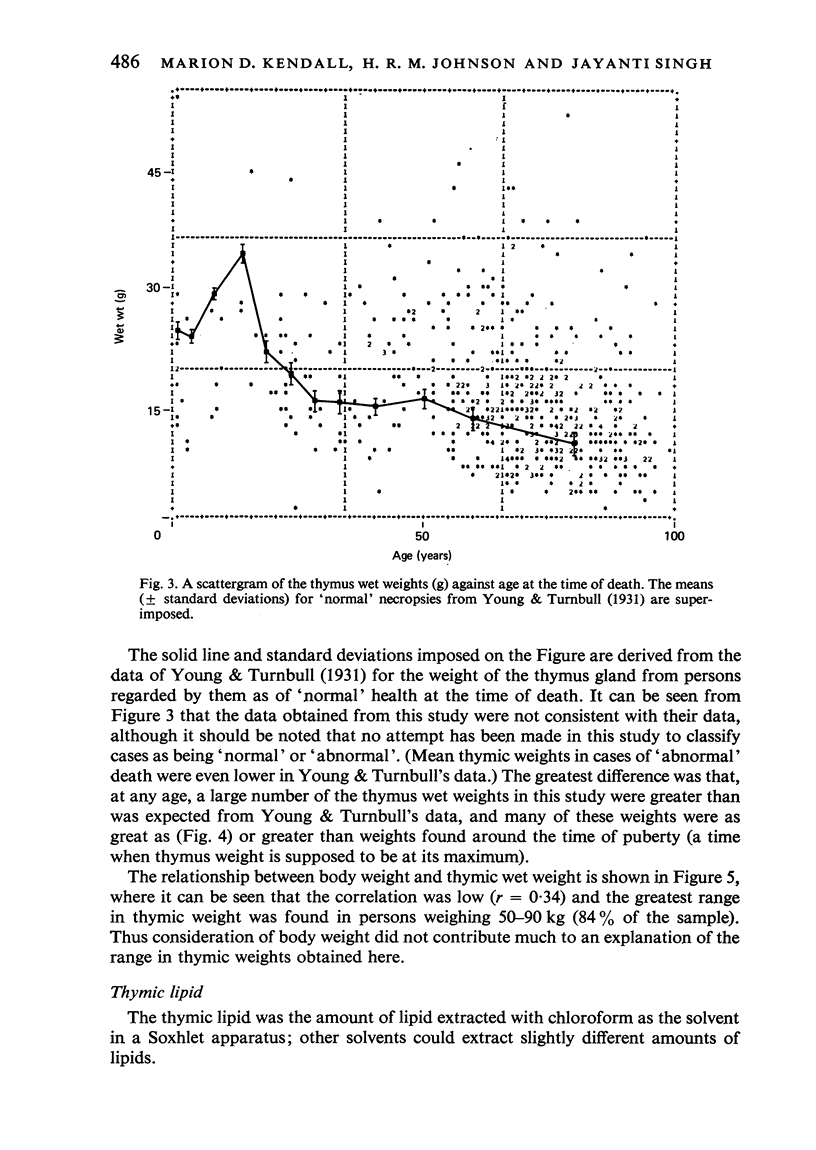
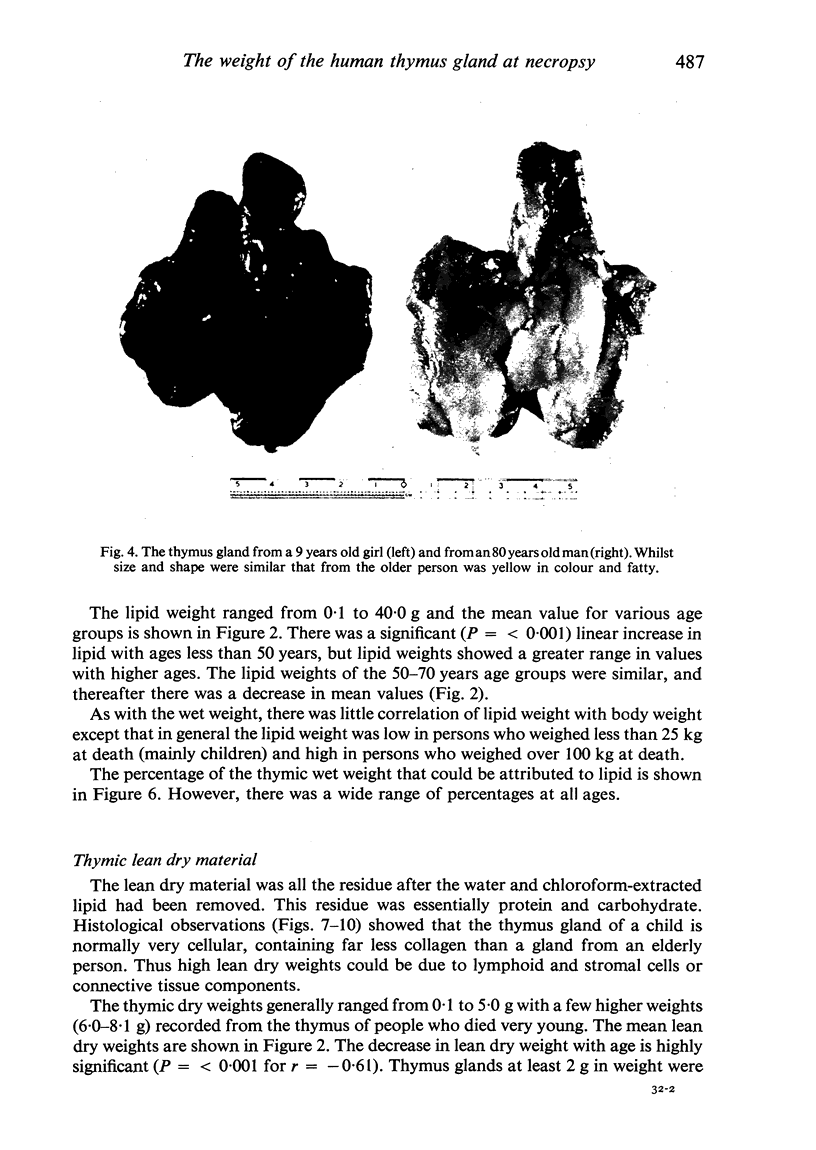
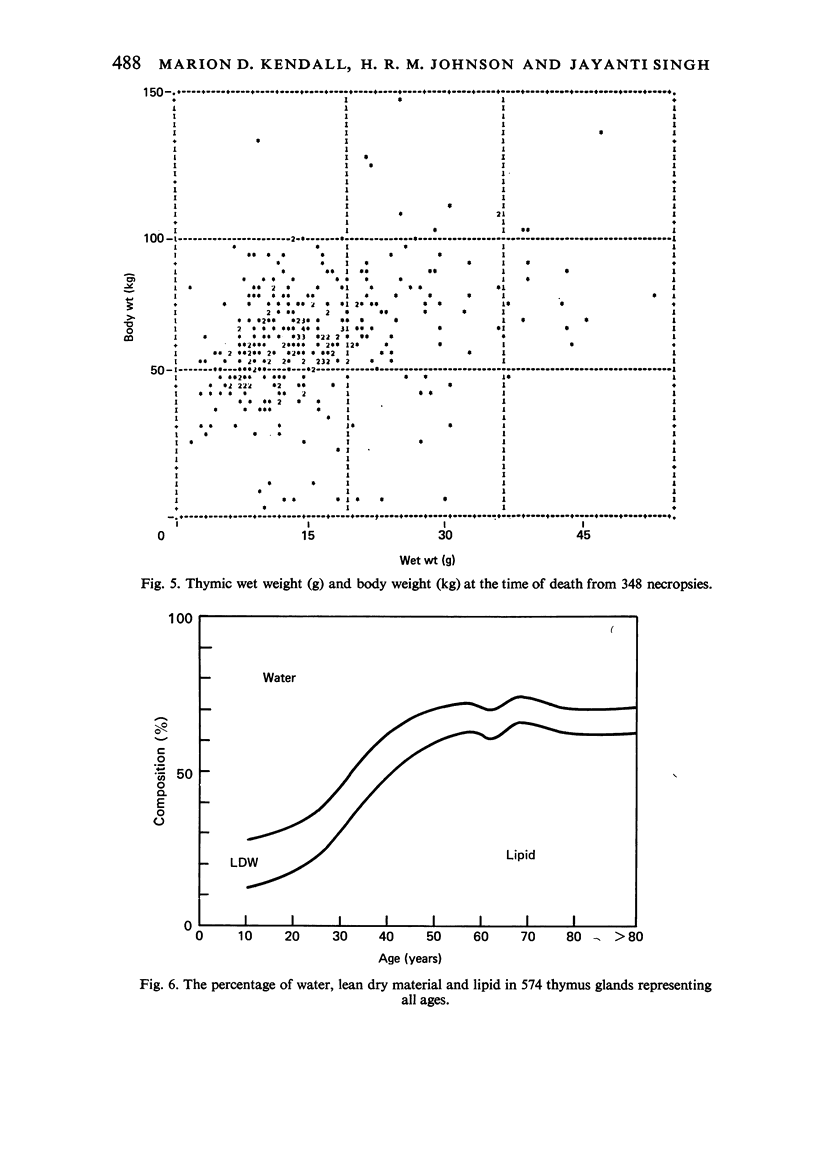
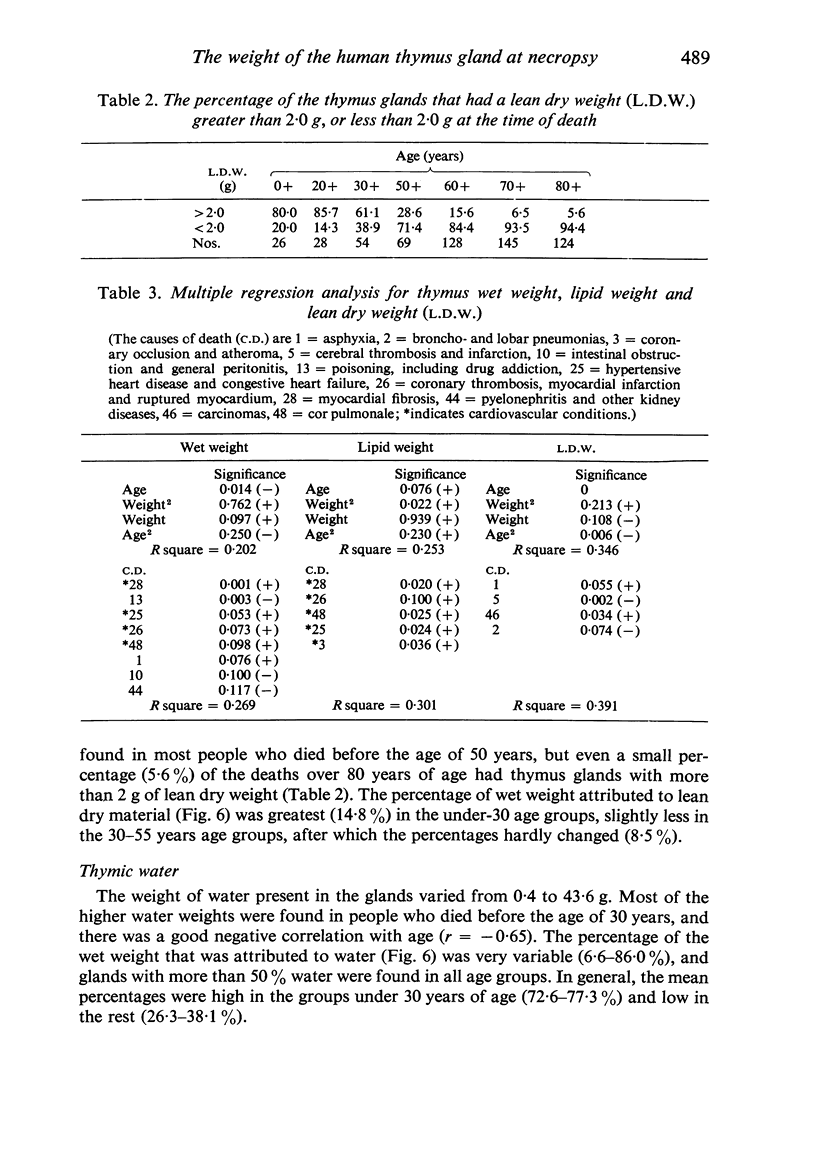
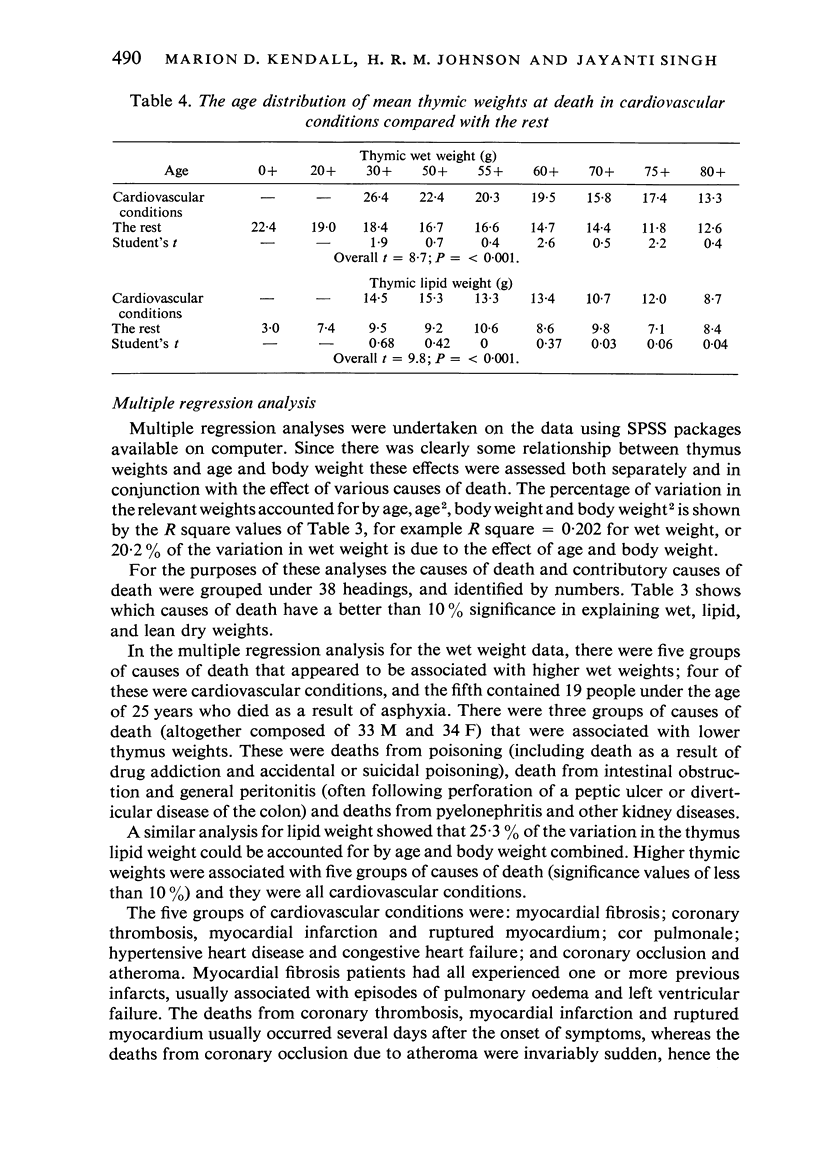
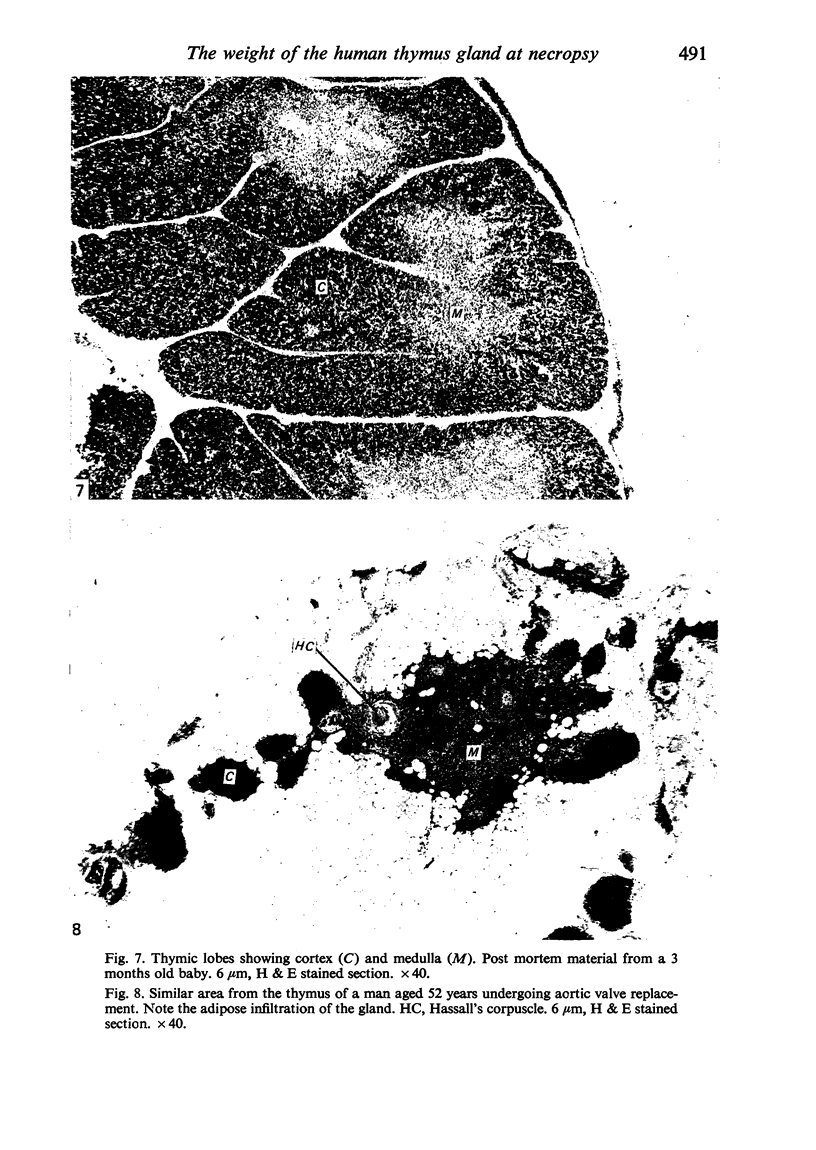
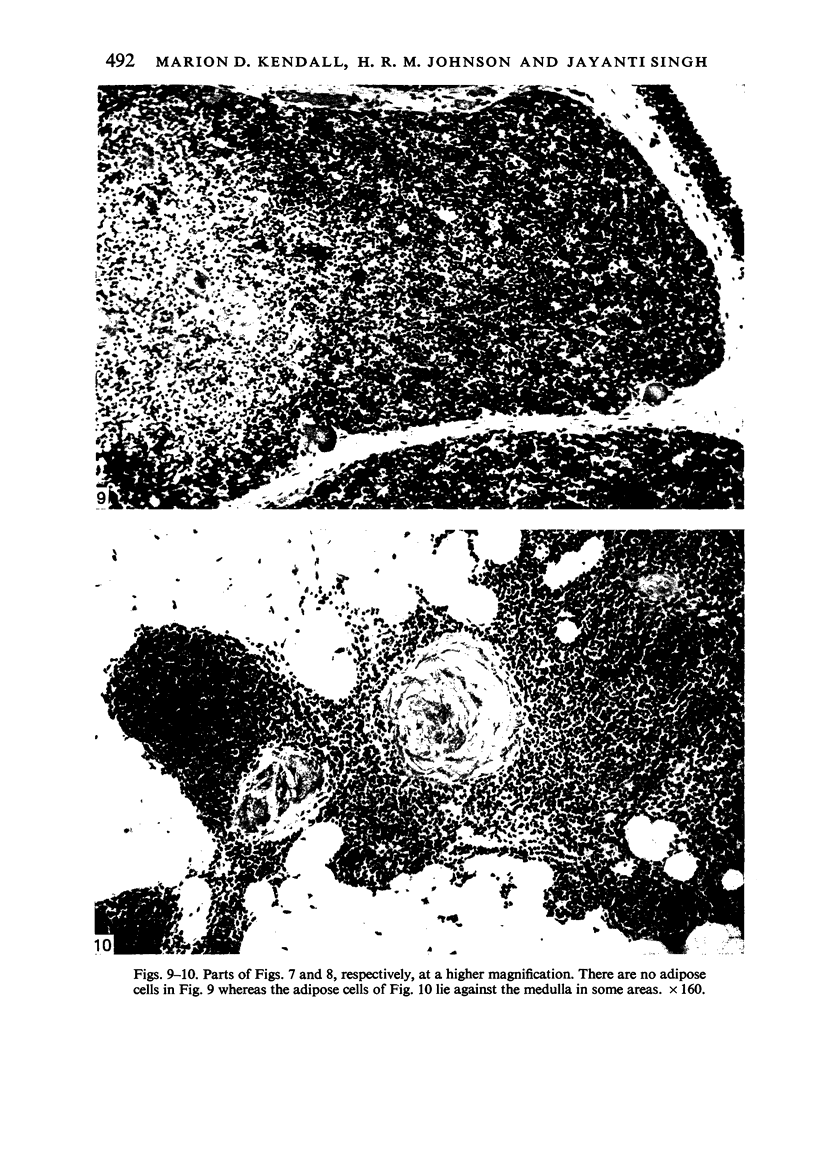

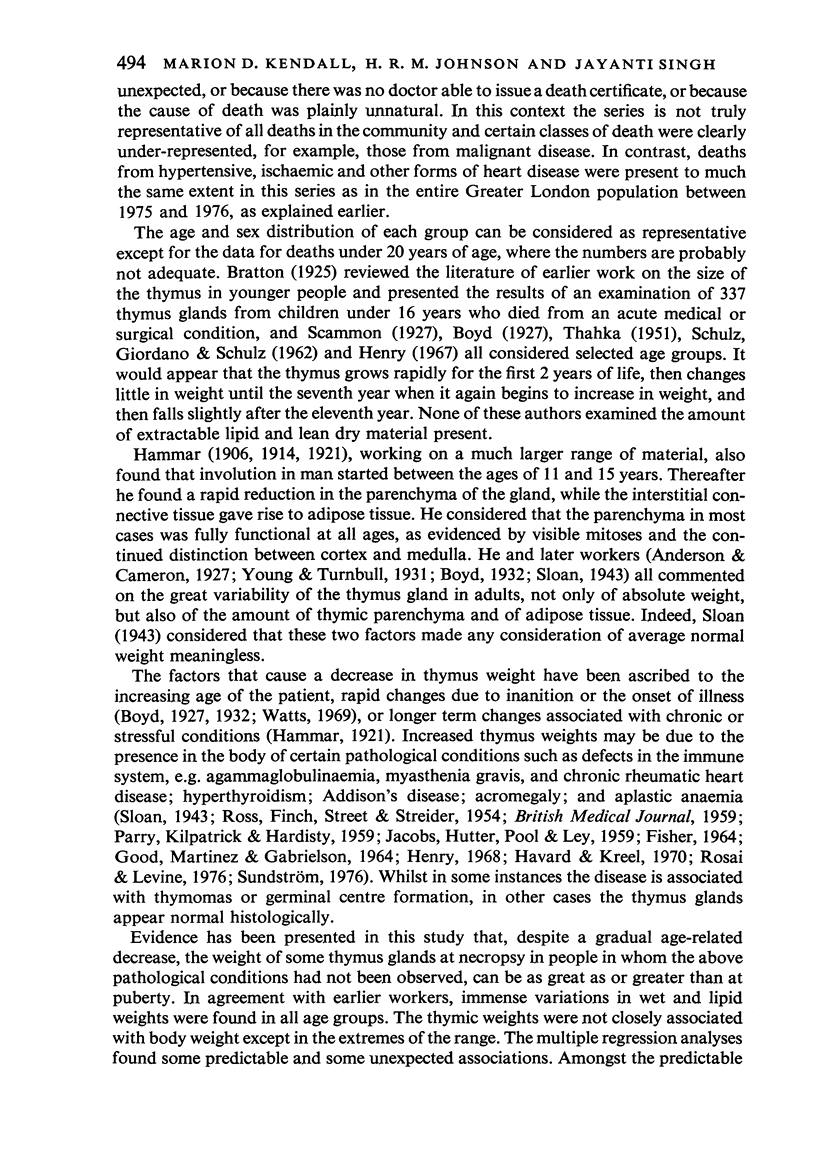
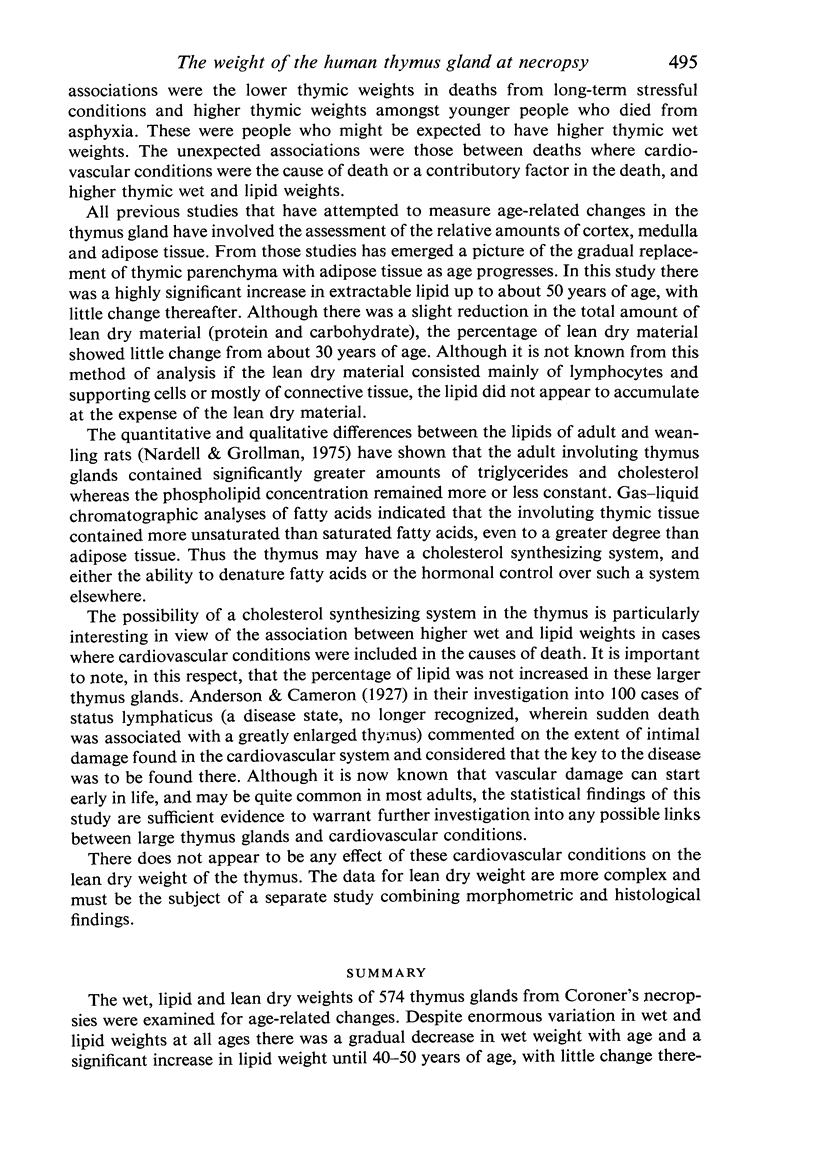
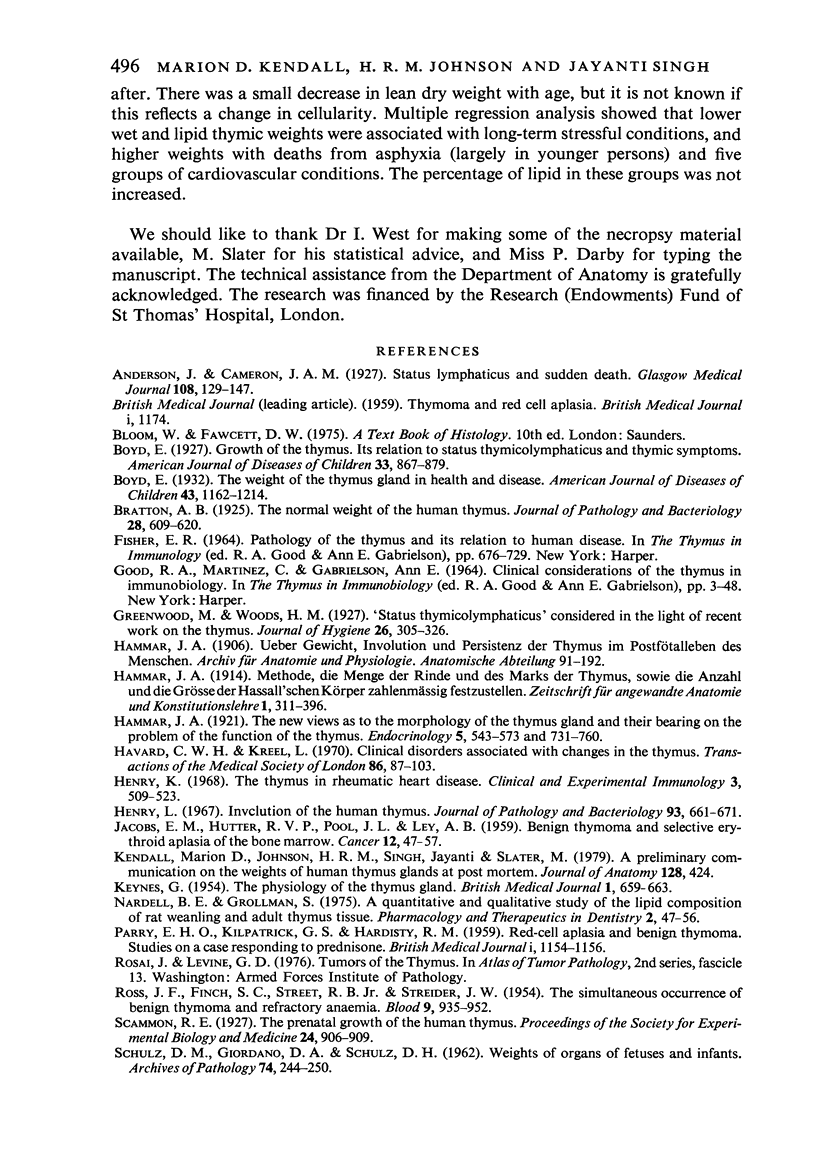

Images in this article
Selected References
These references are in PubMed. This may not be the complete list of references from this article.
- Havard C. W. The function of the thymus. Trans Med Soc Lond. 1970;86:87–96. [PubMed] [Google Scholar]
- Henry K. The thymus in rheumatic heart disease. Clin Exp Immunol. 1968 Jul;3(6):509–523. [PMC free article] [PubMed] [Google Scholar]
- Henry L. Involution of the human thymus. J Pathol Bacteriol. 1967 Apr;93(2):661–671. doi: 10.1002/path.1700930227. [DOI] [PubMed] [Google Scholar]
- JACOBS E. M., HUTTER R. V., POOL J. L., LEY A. B. Benign thymoma and selective erythroid aplasia of the bone marrow. Cancer. 1959 Jan-Feb;12(1):47–57. doi: 10.1002/1097-0142(195901/02)12:1<47::aid-cncr2820120110>3.0.co;2-q. [DOI] [PubMed] [Google Scholar]
- KEYNES G. The physiology of the thymus gland. Br Med J. 1954 Sep 18;2(4889):659–663. doi: 10.1136/bmj.2.4889.659. [DOI] [PMC free article] [PubMed] [Google Scholar]
- Nardell B. E., Grollman S. A quantitative and qualitative study of the lipid composition of rat weaning and adult thymus tissue. Pharmacol Ther Dent. 1975;2(1):47–56. [PubMed] [Google Scholar]
- PARRY E. H., KILPATRICK G. S., HARDISTY R. M. Red-cell aplasia and benign thymoma; studies on a case responding to prednisone. Br Med J. 1959 May 2;1(5130):1154–1156. doi: 10.1136/bmj.1.5130.1154. [DOI] [PMC free article] [PubMed] [Google Scholar]
- ROSS J. F., FINCH S. C., STREET R. B., Jr, STRIEDER J. W. The simultaneous occurrence of benign thymoma and refractory anemia. Blood. 1954 Oct;9(10):935–952. [PubMed] [Google Scholar]
- SCHULZ D. M., GIORDANO D. A., SCHULZ D. H. Weights of organs of fetuses and infants. Arch Pathol. 1962 Sep;74:244–250. [PubMed] [Google Scholar]
- Sundström C. Thymic diseases as revealed by a series of consecutive thymectomies and biopsies from the thymus. Ups J Med Sci. 1976;81(1):18–22. doi: 10.3109/03009737609179016. [DOI] [PubMed] [Google Scholar]
- Watts T. Thymus weights in malnourished children. J Trop Pediatr (1967) 1969 Dec;15(4):155–158. doi: 10.1093/tropej/15.4.155. [DOI] [PubMed] [Google Scholar]






